

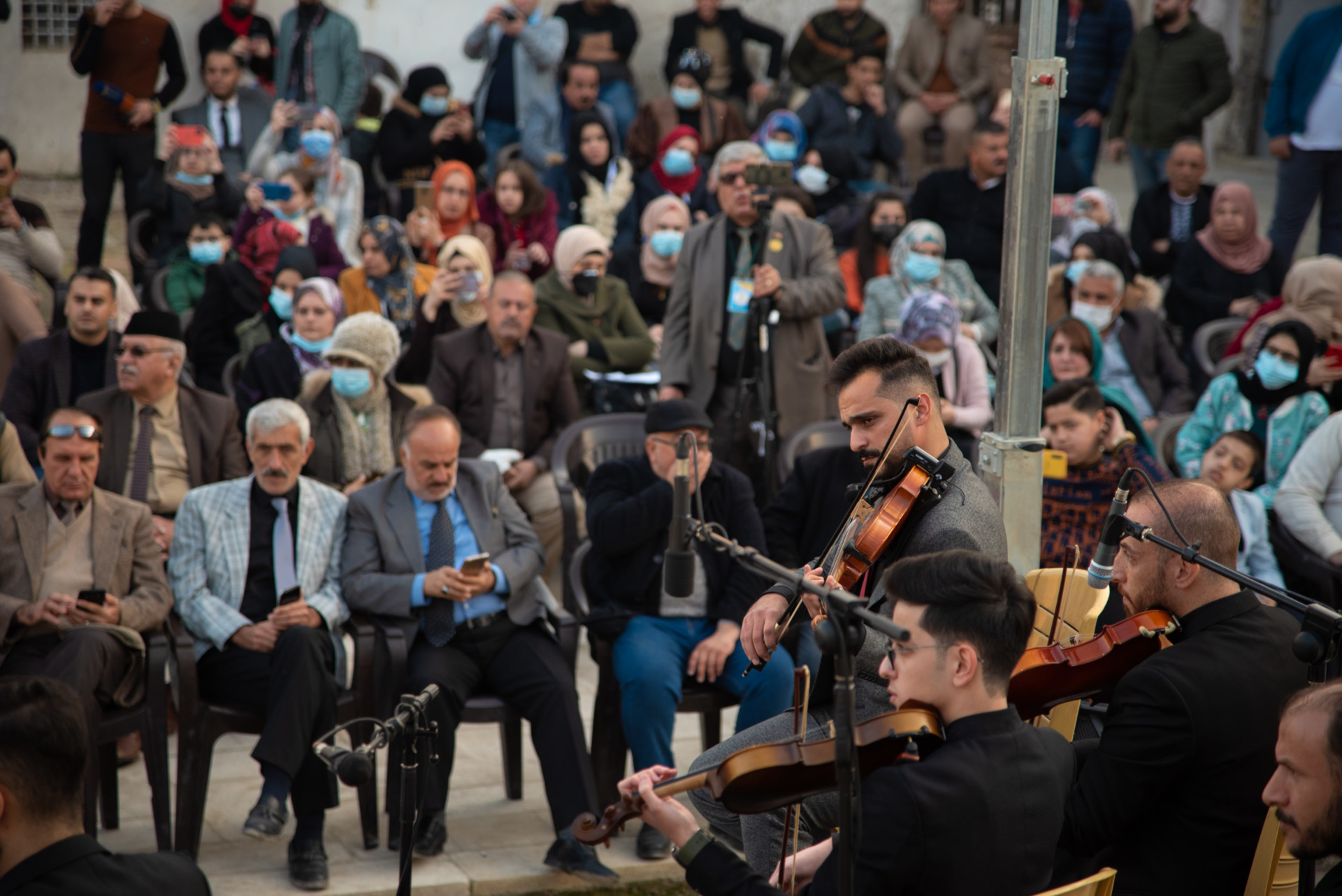

Walking in Mosul
For centuries a river couldn’t split Mosul, but a war did. Along both sides, culture and commerce are coming to life again
I was liberated on Jan. 8, 2017. Eastern Mosul was declared free of the Islamic State group (ISIS) later that month. All eyes were fixed on the western side of the city, which is separated from the eastern half of Mosul by the Tigris. The military operations had been paused for a few weeks, and then the Iraqi divisions started marching up from southern Mosul. The prospect of a military success against ISIS looked as high as they were in eastern Mosul, where I lived. However, the geographical and architectural nature of the Old City, which incidentally wasn’t described as such until after the war, made it quite different. Heavy weapons, airstrikes and “smart artillery” started pounding it from near and far. I used to hear the firing of this so-called smart artillery from the suburbs of my side of the city. I thought that this lethal weapon was used in vast open battlefields only, not in urban, house-to-house battles. Concern about damage to the Old City was shared by most of the people I met.
The joy of liberation started to fade as pictures appeared from western Mosul. Airstrikes and bombings led to the death of hundreds, if not thousands. The battle was over in July. I waited a few weeks before getting a permit to go see what had happened and document it with my camera. I joined a group of producers to film inside the Old City and arrived at the Tigris. Looking through the car window, I froze. The scene was like something I saw only in war movies. This brought to mind something I had wondered before: With all modern progress and sophistication, will this happen again?
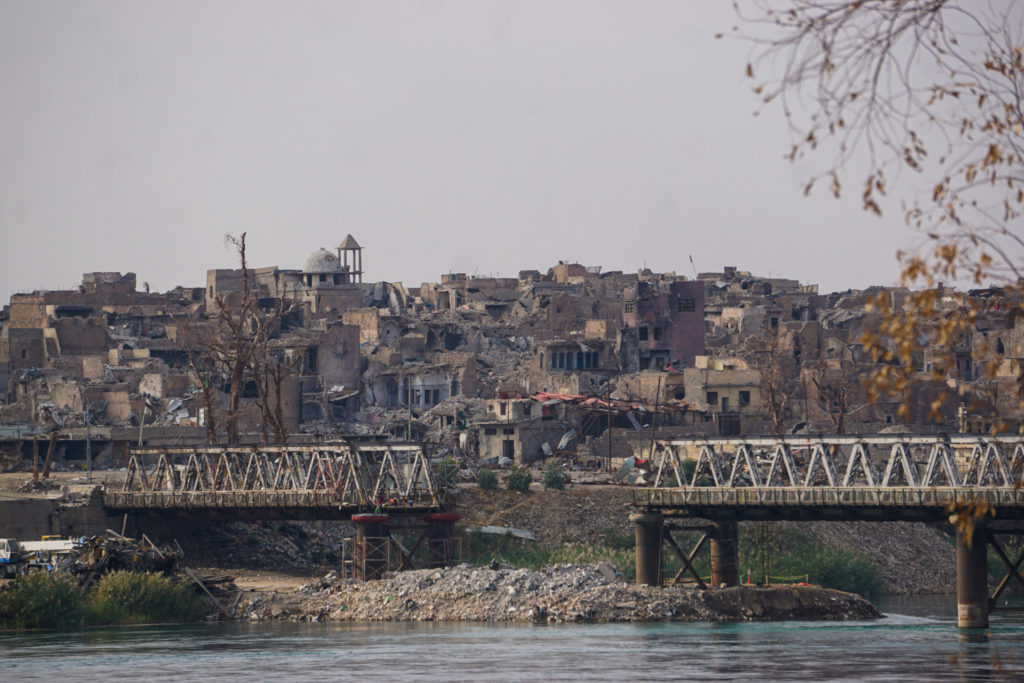
The ancient city that used to connect the East with the West through the Silk Road lay in ruins. Mosul, which means “connecting point,” could not even connect its own two sides of the Tigris. All five bridges were hit by airstrikes to prevent militant movement between the two halves. Seeing the marvelous riverfront turned into a heap of rubble, with the Old Bridge, built by the British in the 1930s, destroyed and at the bottom of the river, was enough to make me sob for my city.
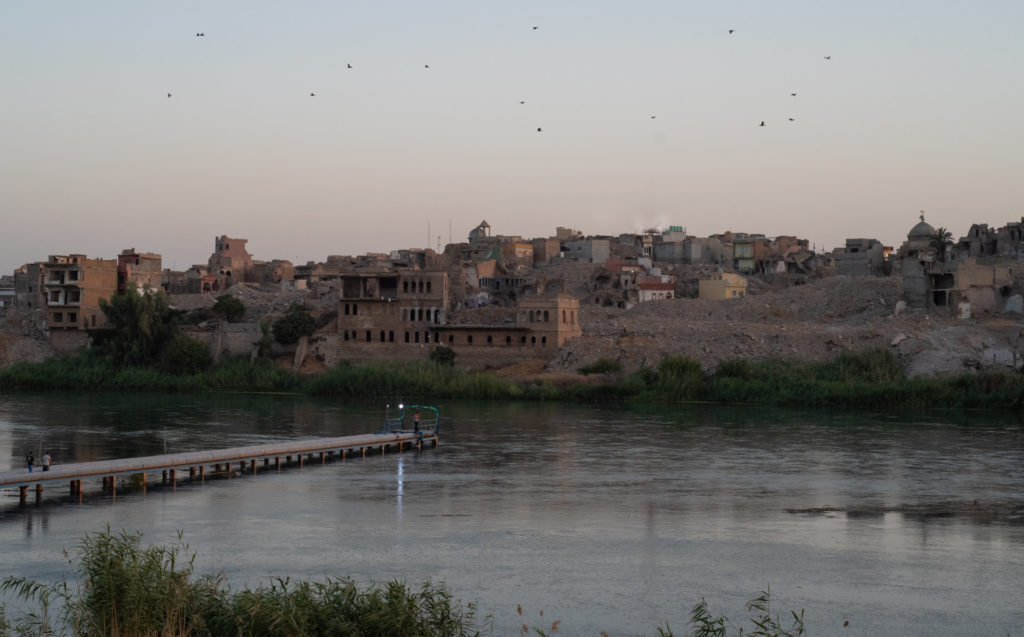
I was unable to cross from where I was, so I had to use a small floating metal bridge, created by the logistics division of the Iraqi army. With all the heavy vehicles crossing, the bridge was swinging from side to side. It was one of only two crossings available — hardly enough to accommodate the transportation needs of a city as large as Mosul.
My first steps were never as heavy. The amount of destruction was astounding: It was not the Mosul we once knew. All the buildings were either riddled with bullets or jarred with missile haloes. Iron dangled from tall buildings, thousands of carbonized cars lay strewn here and there, mosques looked like amputated remains, and churches were deserted. I stood back to take in a panoramic view, trying to understand what happened; it was hard to fathom.
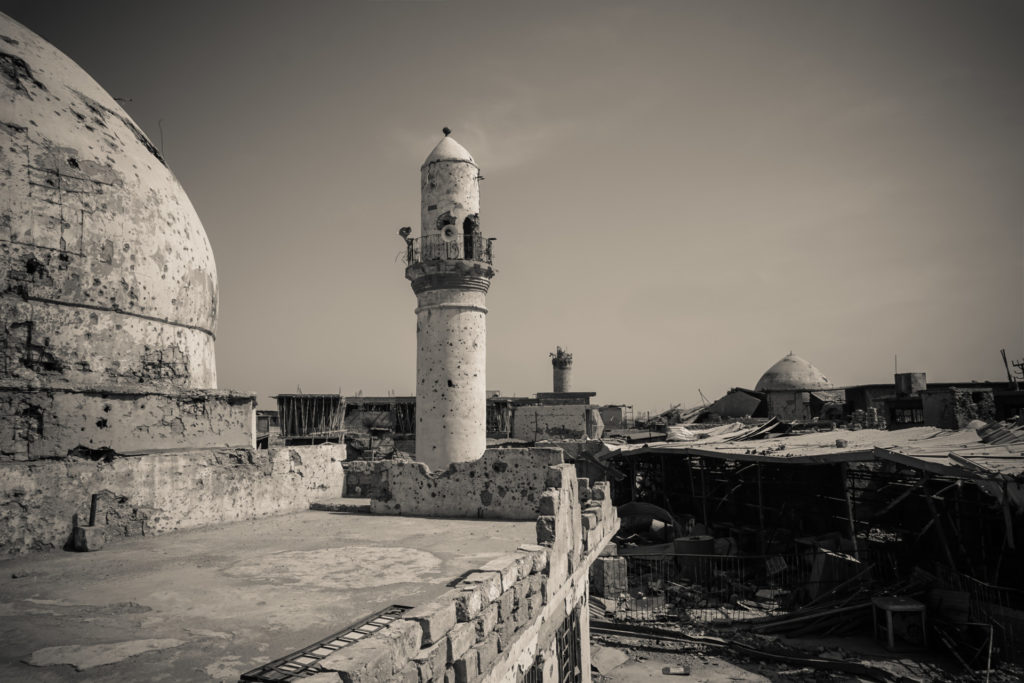
I walked toward the old bazaar. There was no bazaar at all. The bustling place where we once struggled to walk without an elbow fight to get through the crowds was now a sheer heap of rubble. The aroma of spices was gone, the shine of gold in the jeweler’s alley vanished, and the coffee brewers were nowhere to be seen. In some places, I could not recognize or name the shops. It became a deformed place. Najafi Street, which was once home to more than 45 bookstores, was leveled; ashes from the books flew in the air. The multiethnic melting pot was turned into a deserted heath overnight.
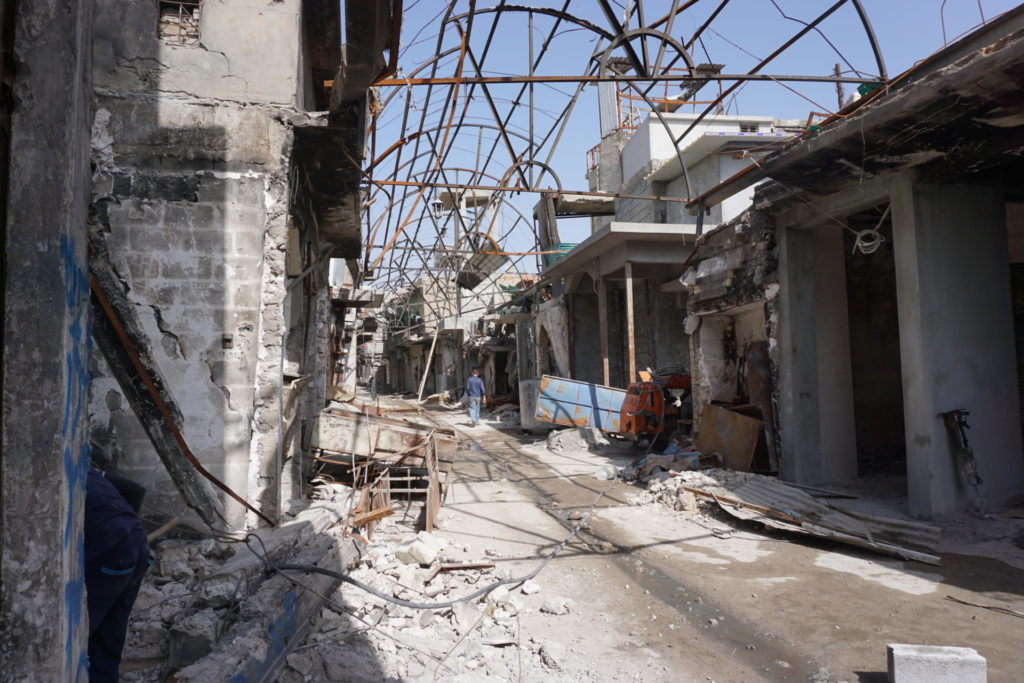
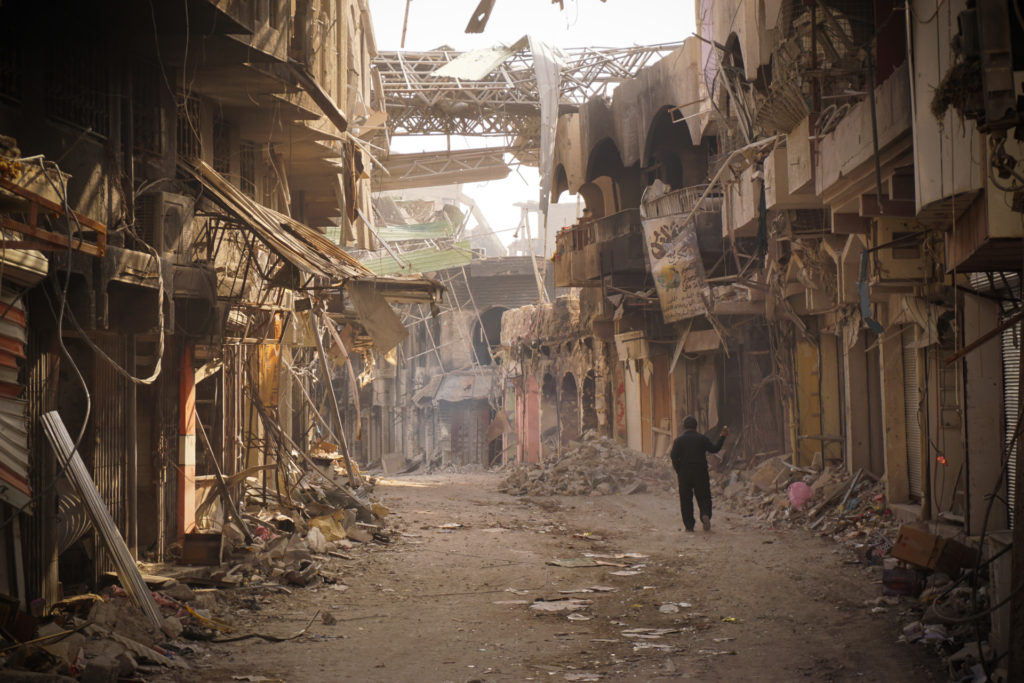
The noise of daily life that had once defined the character of that place was absent. The sounds of voices, usually a constant buzz of indistinguishable words, were suddenly coherent. Walking through the rubble, twisted iron bars and scattered burnt goods, I could barely make it to blacksmith alley, from where I could hear conversation. The blacksmiths, who were trying to restore their shops, revived my hope. They were alone in the market area and welcomed me with joy, stories of hope and tales of suffering under ISIS.
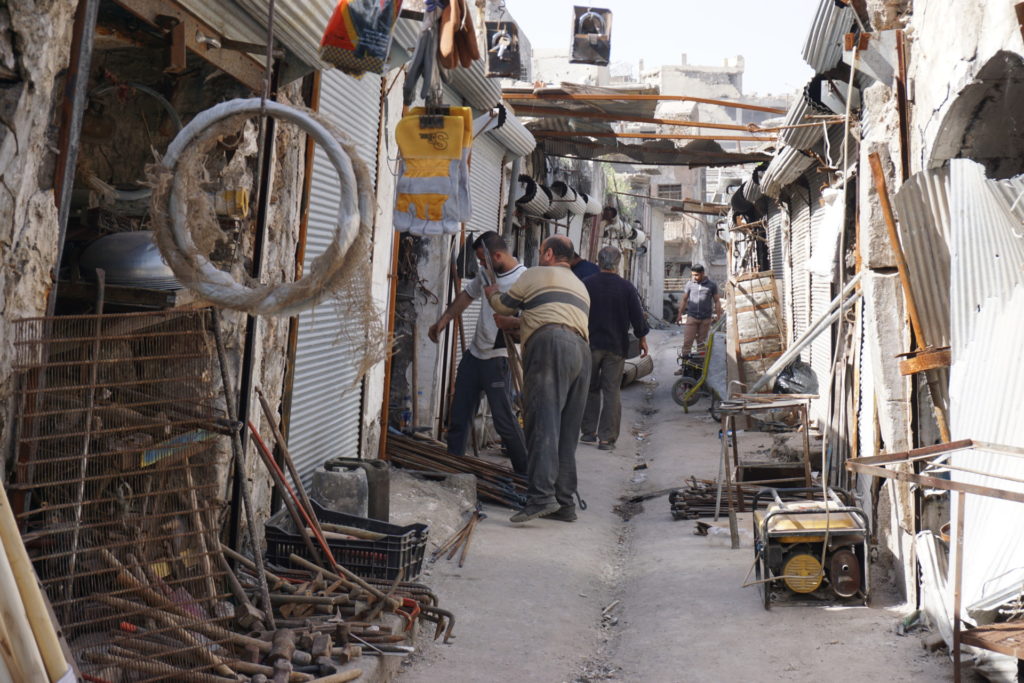
They were more than resolved to bring life back to the commercial hub of the city. Still, the continued deployment of the federal police patrolling the Old City in their bullet-ridden Humvees told of the ferocity of the battle that raged in that part of the city and how far it was from restoration.
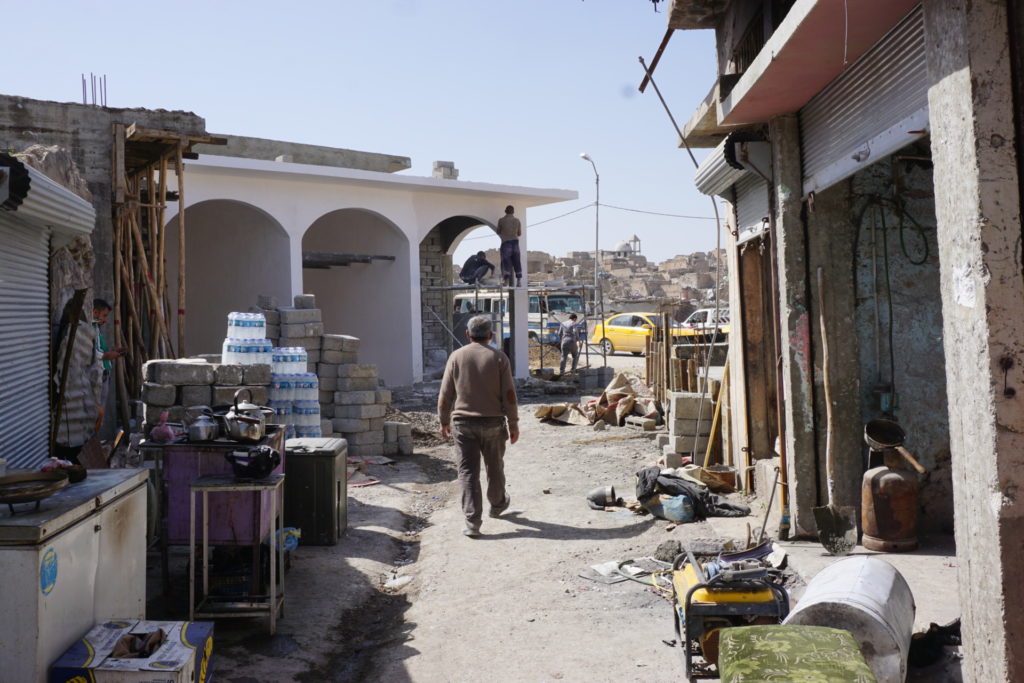
When I crossed back to my side of the city, life there was thriving. Peace and reading festivals were held, and music was celebrated in public. I saw many brands of the old bazaar reopening their businesses on my side. It was truly a city of two tales; one part was forgotten, and another was thriving.
Months passed, and I decided to return to the Old City and walk through the same places again. This time, there was no metal bridge. The iconic Old Bridge was brought back to service in March 2018 to enable movement between the two sides of the city and push the wheel of reconstruction further. The bazaar showed more signs of life with property owners trying to reconstruct what the war had destroyed. But the amount of rubble demanded endless work to reinvigorate this large urban center. Craftspeople and shop owners began feeling hopeless and helpless because of the delay of reconstruction and compensation.
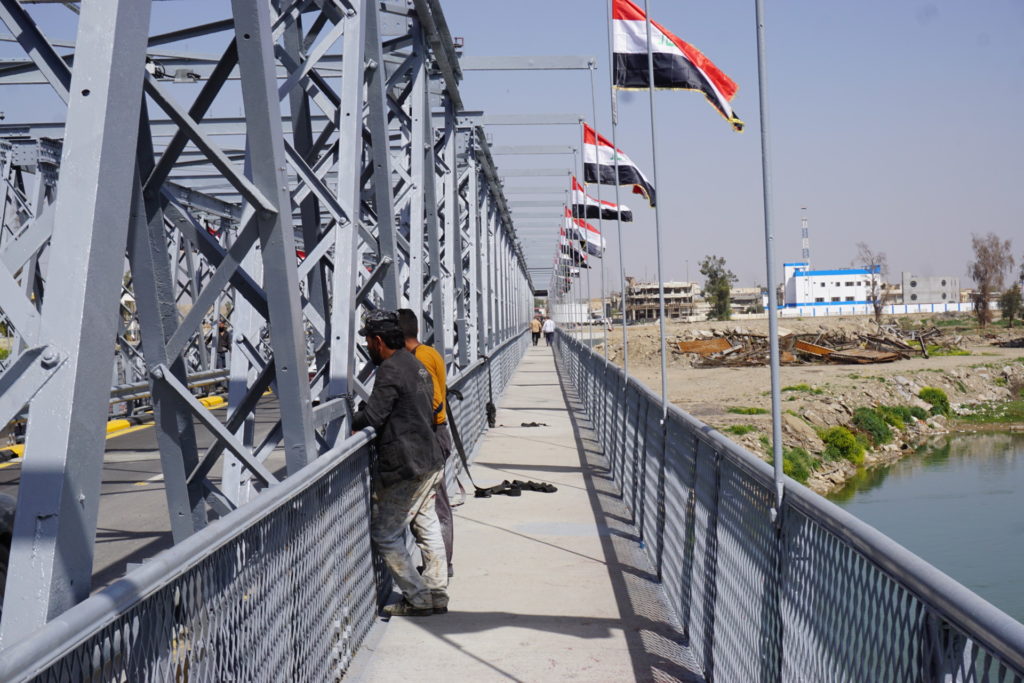
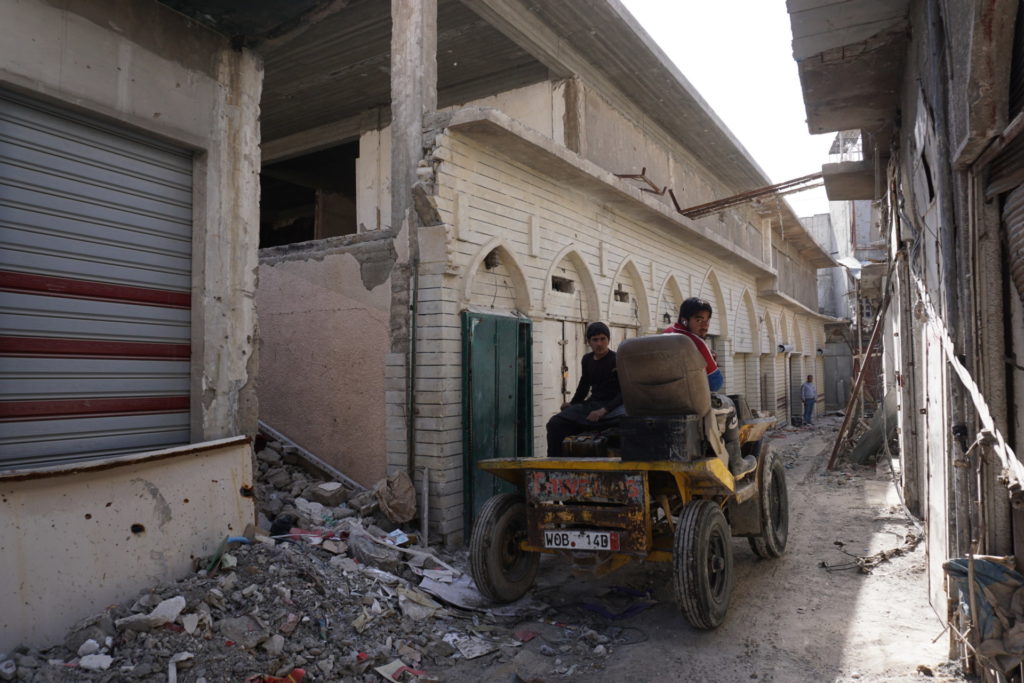
I was walking back home when I entered a newly opened shop in my neighborhood in mid-2018. The owner’s face looked familiar. We had a short chat before I recognized him as a person from the Saray Bazaar, the iconic souq in the Old City. He had lost his shop and decided to reopen in eastern Mosul. Back then I asked Abu Ali if he planned to go back to the Saray any time soon. He shrugged and looked doubtful.
In March 2021, we caught up again, this time in the Saray, where I was interviewing him. His face was radiant with joy: “I am back now. We fixed our shops, and here we are.” He answered my question with joy and openness. “Now I have two shops,” he said. “I kept the one in eastern Mosul, but most important I am back to my old one that I learned a lot from.” Abu Ali is just one example of many who have expanded their business in Mosul. As I walked around, the place was again smelling of spices, meat and fish — my sensory experience was restored.
Mosulis seemed committed to making the bazaar even better than before. I found my way back to the blacksmith alley; they offered me an Iraqi specialty of cardamom-flavored tea, served in a small gilded istikan cup, which I drank quickly so I could begin asking my questions. This time, their responses were more hopeful, even lyrical.
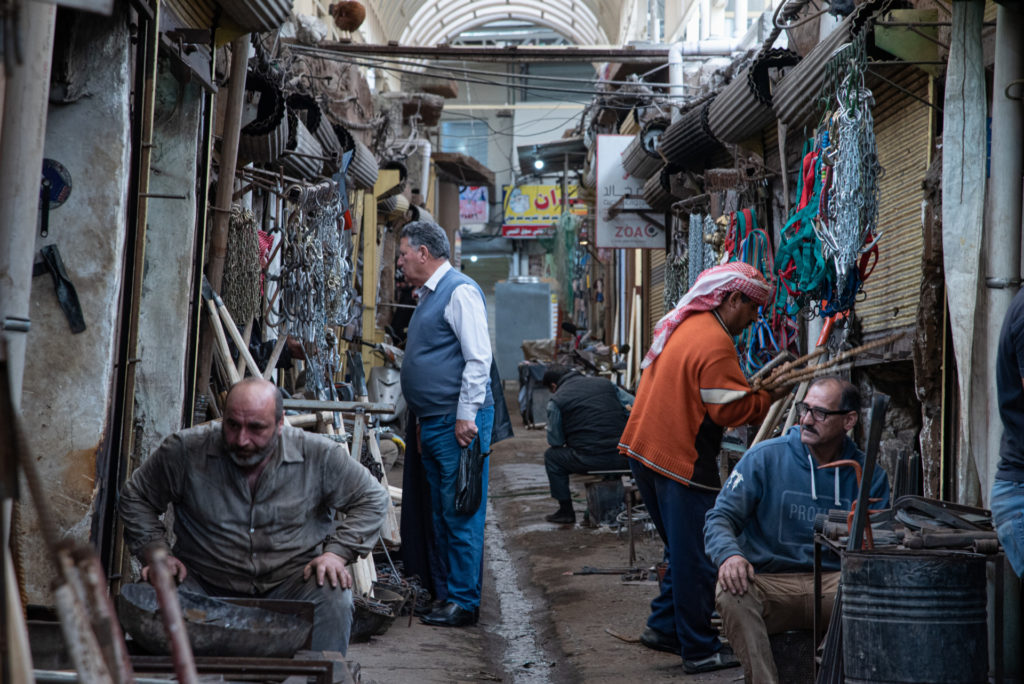
Knifemaker Riyadh al-Mosuli expressed his deep attachment to the place. His small shop is decorated with his handmade knives. He is one of a few who still practice this ancient craft amid the influx of much cheaper imported products. “What you hear in the blacksmith alley is not noise,” al-Masuli said, smiling as he sharpened a wood-handled knife with his name carved on it indicating this famous local brand. “It’s rather a music that the Old Bridge seagulls dance to their rhythm,” he added, proudly. “I got this craft from my uncle,” he continued, “and now my children are getting it from me.” I interrupted with another question: “Don’t you think that Mosulis prefer government jobs nowadays? What makes your son willing to get this craft from you?” He replied: “My son is already a government employee and has his own payment. But he takes this job as a craft to guarantee his future.” Mosulis seem to have learned from the ISIS era when government payments were cut off in July 2015, causing thousands to suffer from severe shortages. As we spoke, the sparks flew from the blacksmiths’ iron bars, and it felt like a revolution in the old bazaar.
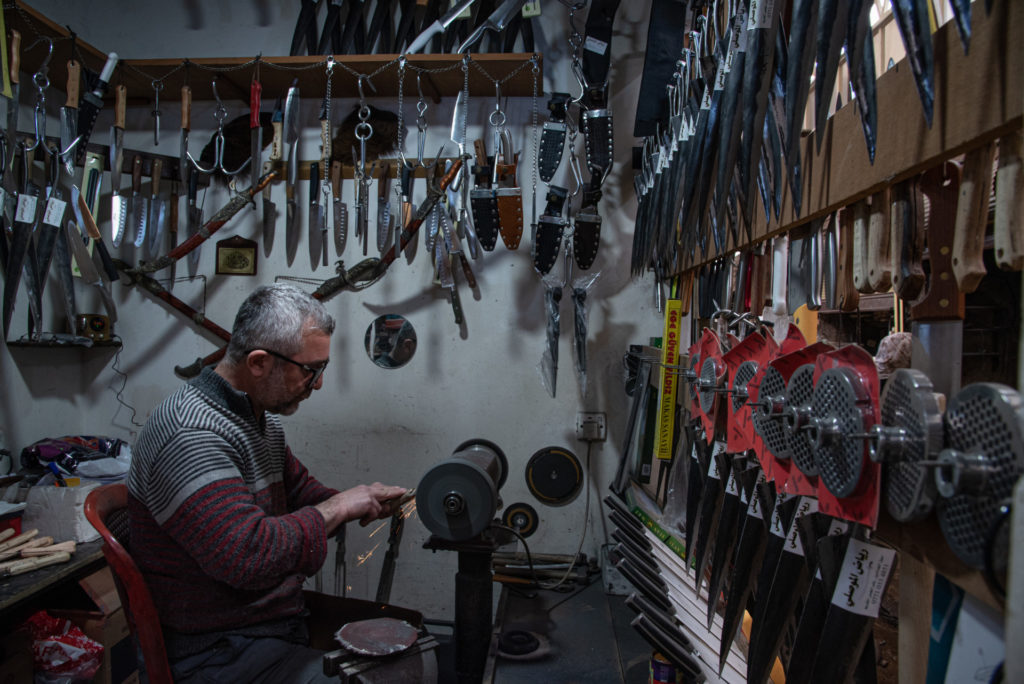
I had a specific plan in mind as I examined the Old City. I wanted to meet and talk to a particular businessman who revived the place and turned it from a heap of rubble into a workable, busy place. I was led to Wadhah al-Jalili. It is a well-known fact in Mosul that the al-Jalilis are an ancient Mosuli family who have made philanthropic gestures during rough times. Hussein Pasha al-Jalili, for example, defended the city against Ottoman-era Nader Shah’s military campaigns in the 17th century. The current situation is not much different from three centuries ago. Mosul was invaded by ISIS, atrociously attacked and later liberated at a heavy cost.
When I arrived at the building where Wadhah’s office was located, I had to double-check that I had the correct address; only months before, this very spot was a demolished heap of rubble. This time, I was welcomed into a fancy, quiet office building and offered cardamom-flavored coffee. Wadhah, in his 50s, looked smart and determined. After the liberation of Mosul, Wadhah told me, he walked to the Old City to check his family properties in the bazaar and found them in ruins. About 70% to 80% of the bazaar was gone, but that did not stop him from rebuilding his family properties in the heart of the bazaar. “Almost nobody encouraged me to rebuild,” he said. With barely a pause after sipping his coffee, he continued: “They called it quite an uncalculated adventure. The bridges were all down in River Tigris, and my properties are in the heart of the bazaar, and no one can reach them with lorries as they were blocked with rubble.”
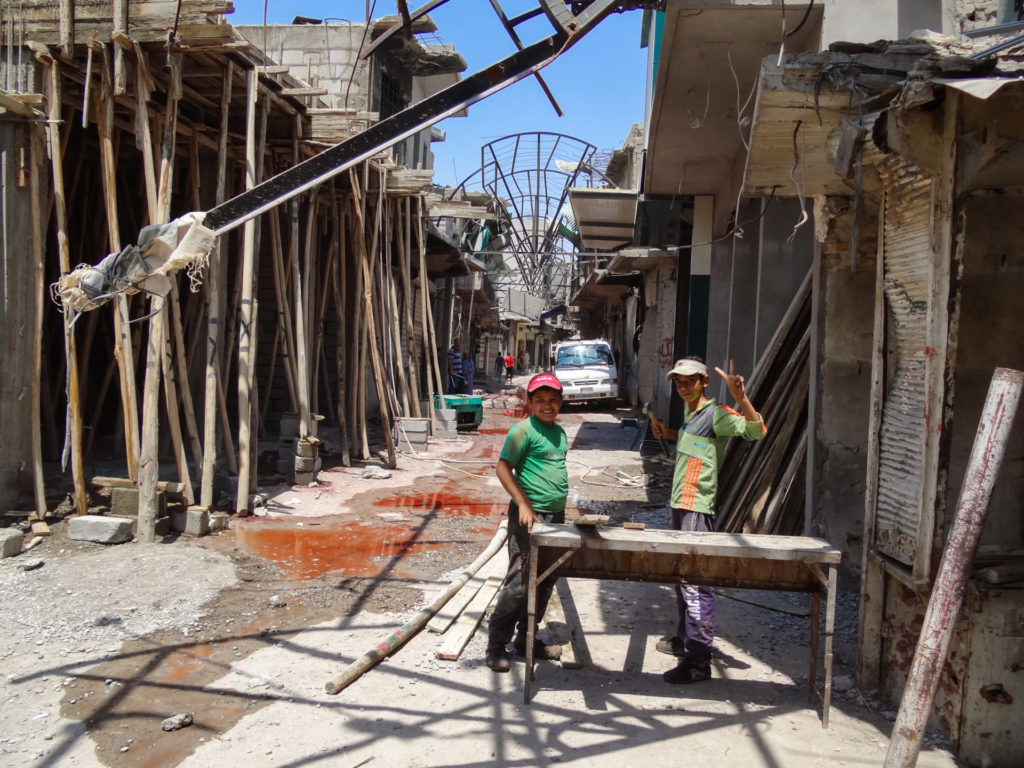
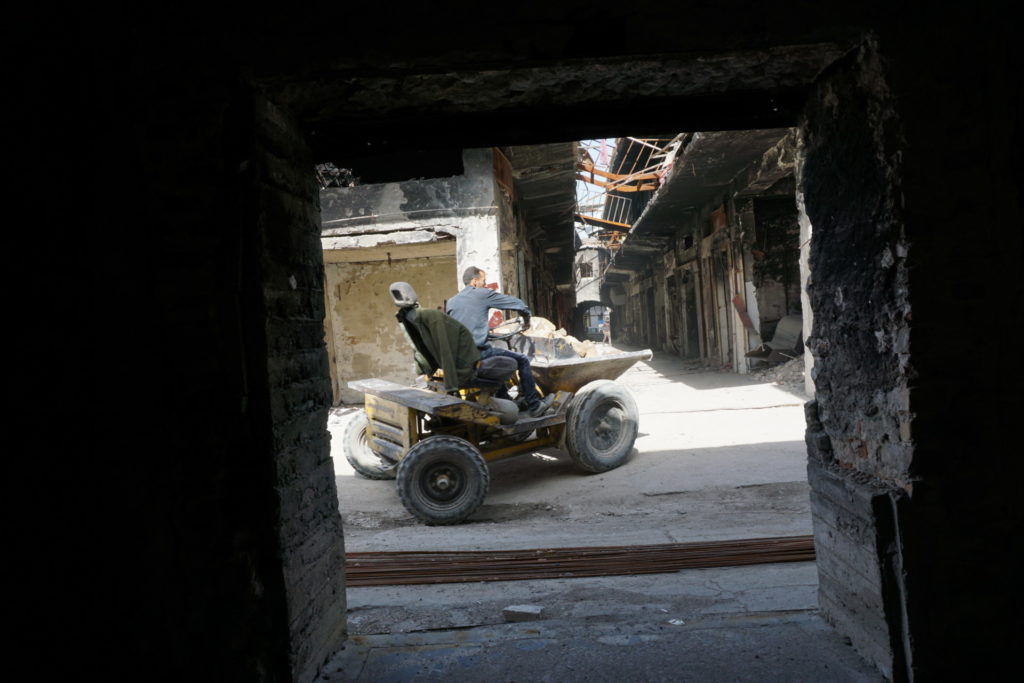
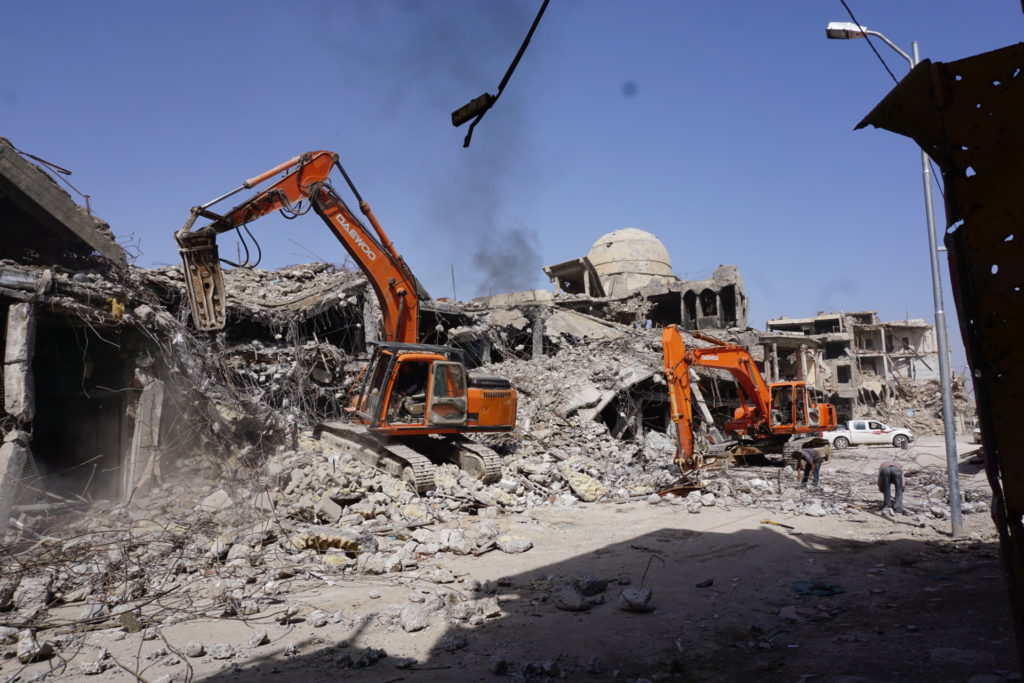
The local municipality helped with removing the rubble and reopening blocked roads. This allowed the bazaar’s merchants to come back and help. Wadhah added, “My moves inspired a lot of merchants who resorted to their connections to receive help.” By help he meant reparations for the damage caused by military operations. “We wanted reparations so we can revive this ancient place. None of that happened. We filed complaints, and we received not a single dime from the government.”
Reparations are a complicated issue for Mosulis in the post-ISIS period. Mosuli activists made comparisons to governorates like Anbar and Salah al-Din, which suffered less damage but received more compensation than Mosul, where the destruction was on par with that seen in World War II. Recently, however, the central government sent billions of dinars to pay people for their damaged properties or their lost family members. I asked Wadhah why he thought Mosul was neglected and why international organizations seemed to be doing more than the Iraqi government. He had one word: corruption.
He said shop owners were motivated to return because of their resilience and their sense of roots they had in the Old City. Some of them felt proud of practicing an ancient, four-century-old craft. A soap seller stands next to his son and grandson — three generations and one craft. Families gain their names after the crafts they practice. It is not just a job: It is an attachment to a lifestyle. Before I left, I had one last question for Wadhah: “Is the bazaar back?” After a long, deep sigh, Wadhah fervidly explained: “The bazaar is not back and will never be back as it once was. Many people from Kurdistan, southern and western Mosul used to come here for shopping. Now, they are not. Also, there are new flourishing markets like Nabi Younis on the eastern side and Mosul al-Jadida on the western side. All these new competitions are diminishing the financial role the bazaar once had. Most important, there are still empty neighborhoods around. The working force of the bazaar used to be from there. Now they are not around to work here.”
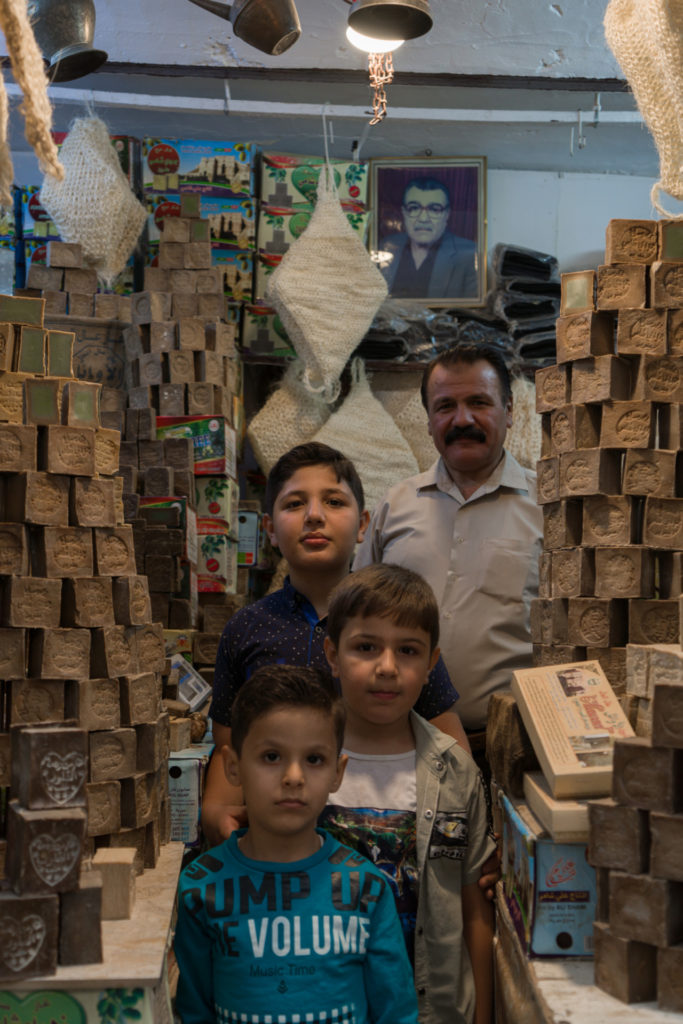
I left the office and was accompanied by two men from the Jalili family. They offered me a tour of the bazaar, something I could not reject. We stopped and spoke with Abu Hathal, a man in his late 50s who sat behind a desk with his late father’s portrait hanging on the sidewall. Abu Hathal is best known in Mosul for being one of few who walked through the rubble, making relentless calls to the municipality urging them to come to help reopen the alleys. “I joined my father in this place 45 years ago; I was just 8 years old,” he started. “I was liberated in March 2017, and my eyes were fixed on the bazaar. At the beginning, it was full of rubble, explosives and dead bodies. The municipality joined with few vehicles to reopen the narrow alleys, and most of the bazaar is now roofed and protected.” I asked him about the source of help they received, and Abu Hathal pointed to the nearby office building of the Jalili family and said: “They forgave many months’ rent. We will never forget that.” In a reciprocal gesture, Zain al-Jalili interrupted Abu Hathal and said, “Abu Hathal sparked it all.” Zain then walked me through many of their ancient properties, khans (inns) in particular, which used to boast both commercial and social value, as well as provide a resting place for the caravans traveling through the ancient silk roads. “I was under siege for over 120 days. My neighborhood, al-Farooq, in the old town was trapped between the marching forces and ISIS militants. I was liberated in July 2017 and fixed my eyes on the old bazaar to revive,” Zain said.
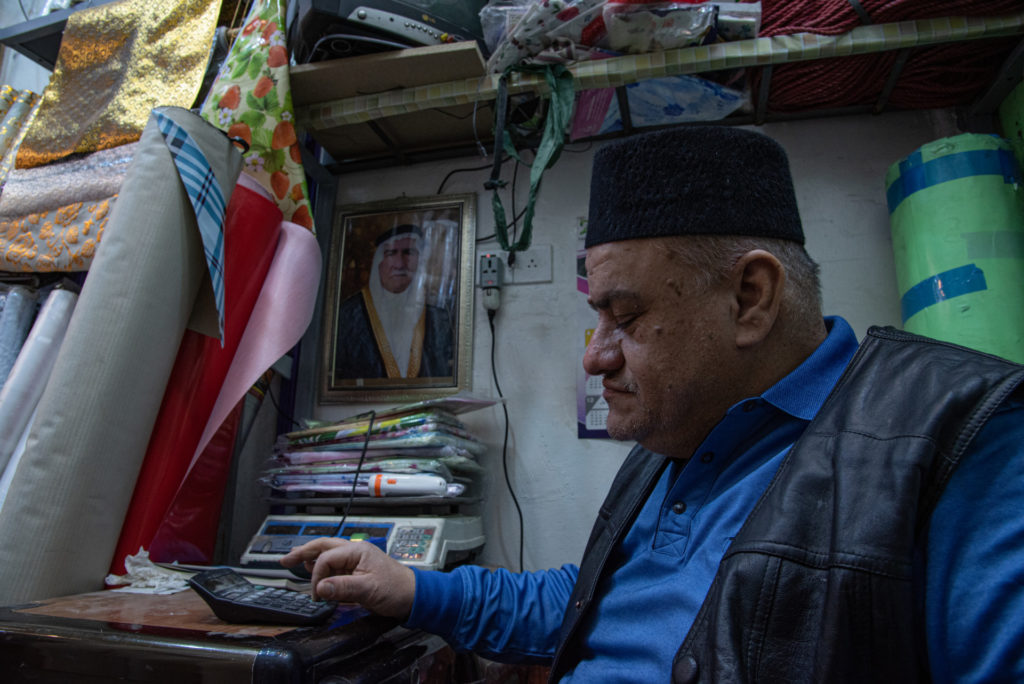

Saud al-Jalili, 35, who works as a court legal assistant, echoed this sentiment. “The bazaar is not only a place for business. It’s our family history and legacy,” Saud said. “If you look at Al-Gimrig Khan, for example, it dates back to 1704. We made sure to restore them according to the typical heritage restoration standards. Reading that date on the gate gives me pride and moral commitment to this honorable legacy,” Saud added. These ancient khans have new sociocultural functions in the post-ISIS era. Concerts, festivals and new year celebrations are now held there.
.

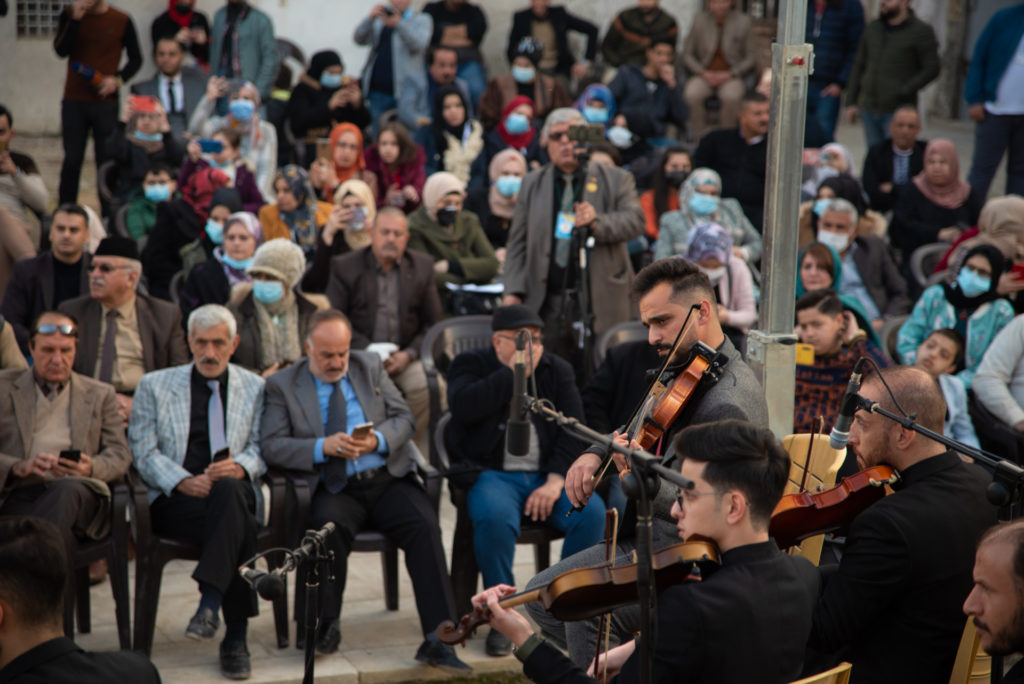
I paid a visit to Fahad Sabah, an activist who recently organized a music event in that ancient part of the bazaar where hundreds of people filled its yard. “Mosul has always been introduced through war and violence; I want to do the opposite,” Fahad said, sounding firmly optimistic. “We need more highlights and focus on our heritage sites. People of Mosul and the world need to know the true value of the khans and bazaar. It’s also a message of resilience to send worldwide,” Fahad said.
Ordinary shoppers also want to restore the bazaar to its former glory and raise awareness of its historic place. Ahmed Shaker, a shopper, told me that going through the bazaar was no longer akin to “normal shopping.”
“It is rather a kind of support for the whole bazaar to stand on its feet again,” he said.
The bazaar dates back more than four centuries. New parts were established outside the bazaar, such as Najafi Street in 1913. Sarichkhana Street and Dawasa Street were developed later. Dawasa is a place mainly dedicated to men’s fashion, while women find their fare on Sarichkhana Street.
Najafi Street is a true testament to Iraqi culture and the intelligentsia. It is only one of many sprawling booksellers’ areas in Iraq, like the famous Al-Mutanaby Street in Baghdad, Alfaraheedi in Basra and many others across the country.
Najafi Street used to hold scores of bookstores, libraries and publishing houses, but this part of the bazaar still lies in ruins. I had been cautiously optimistic back in November 2017, when I heard some activity, but only small changes have happened since then. To learn more details about this pivotal cultural hub, I headed back to eastern Mosul to interview 40-year-old Husam, who, like many librarians, decided to reopen his business in the new part of the city.
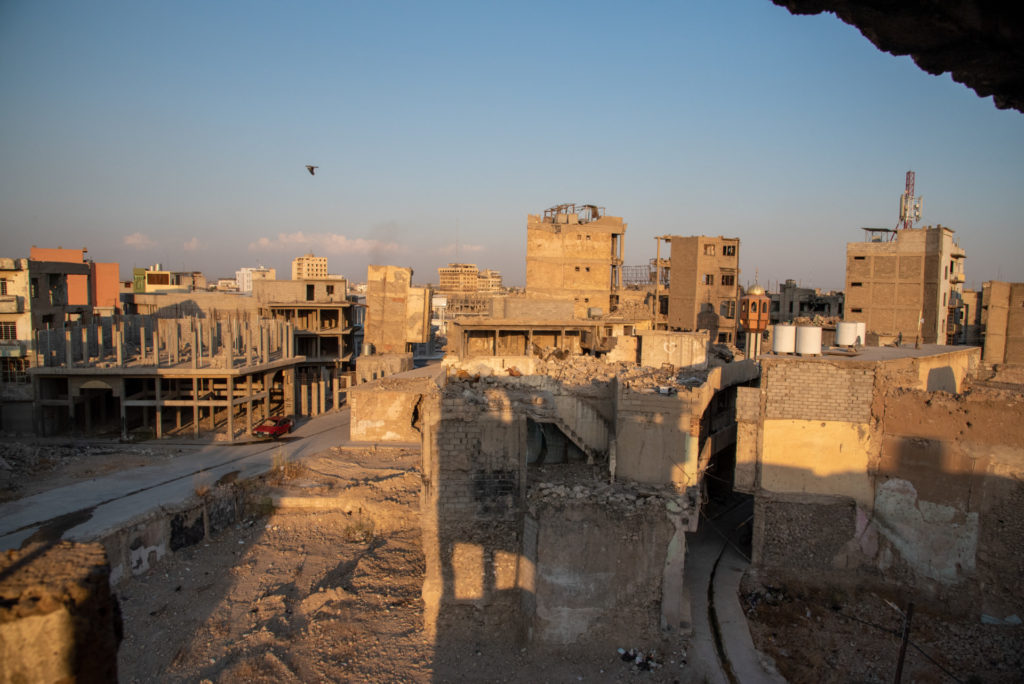
Sitting among piles of books, Husam said, “Culture has always been under threat. Books have always been a source of trouble here.”
Indeed, in a place like Iraq, books can be a dangerous thing. Many books were forbidden under Saddam Hussein. After the fall of Saddam in 2003, we were kind of optimistic. We thought things could improve, but our optimism was short-lived. Terror groups started dominating the scene, and innocent people were assassinated in the street.
When ISIS took control, we started hiding books out of fear for our lives. ISIS kidnapped my friend and executed him for selling books. He was selling law books, as he always had, but ISIS labeled these as anti-Islamic. Meanwhile, thousands of books touting extremist ideology became widely available.
Even with these dangers, Husam reiterated the importance of Najafi Street. It was not simply a place to sell books; it was a community.
“We used to be close to each other. However, we are now scattered here and there. It’s not back because culture and knowledge do not matter a lot to people in charge. Mosul has been targeted with the destruction of Najafi Street, which is the identity of Mosul,” he said.
Mosuli activists have campaigned many times to revive it, but there has been no significant support from the government. International organizations like the International Organization for Migration (IOM) and the U.S. Agency for International Development (USAID) have been helpful with their support of the Book Sidewalk, located near the University of Mosul in the eastern half of the city. Every Friday the Book Sidewalk hosts booksellers, poets, educators, artists and musicians as well as many cultural activities. But hearts remain filled with nostalgia for the birthplace of books on Najafi Street.
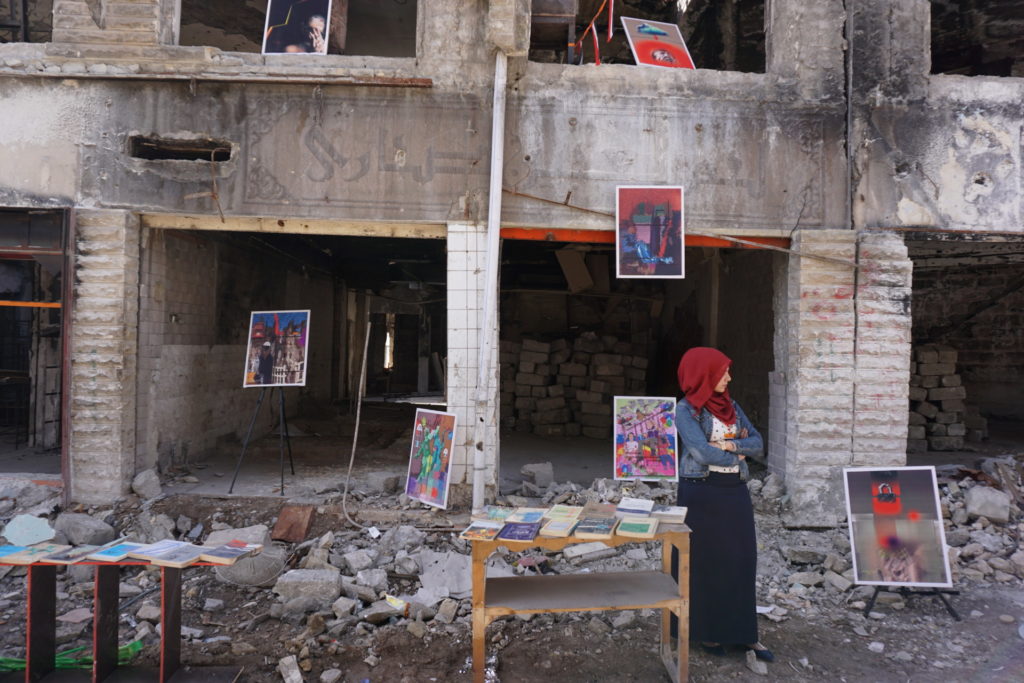
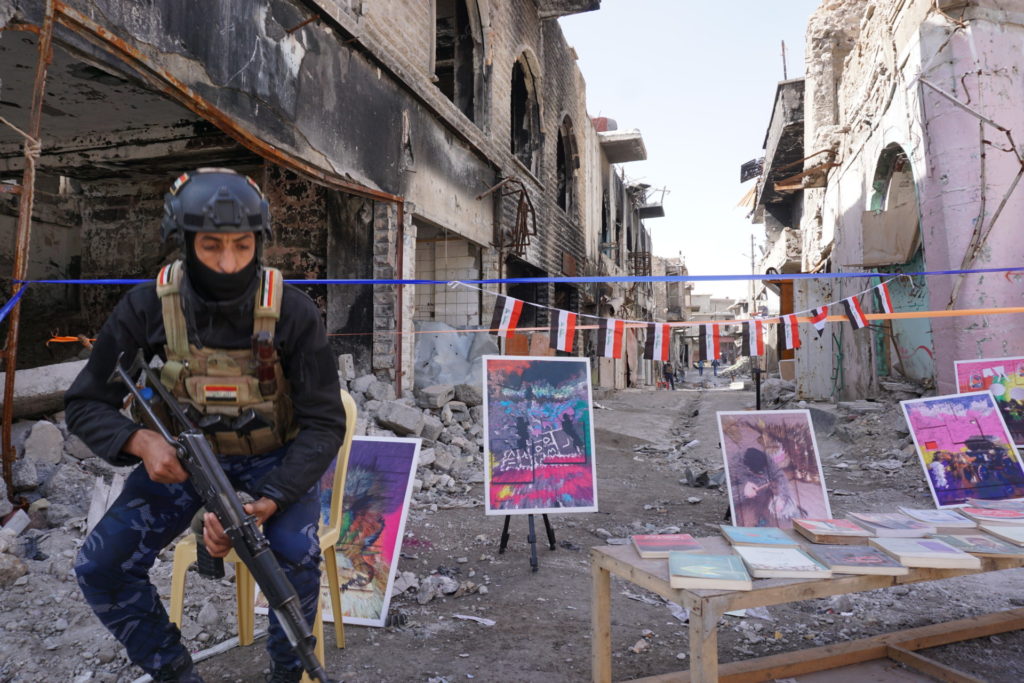
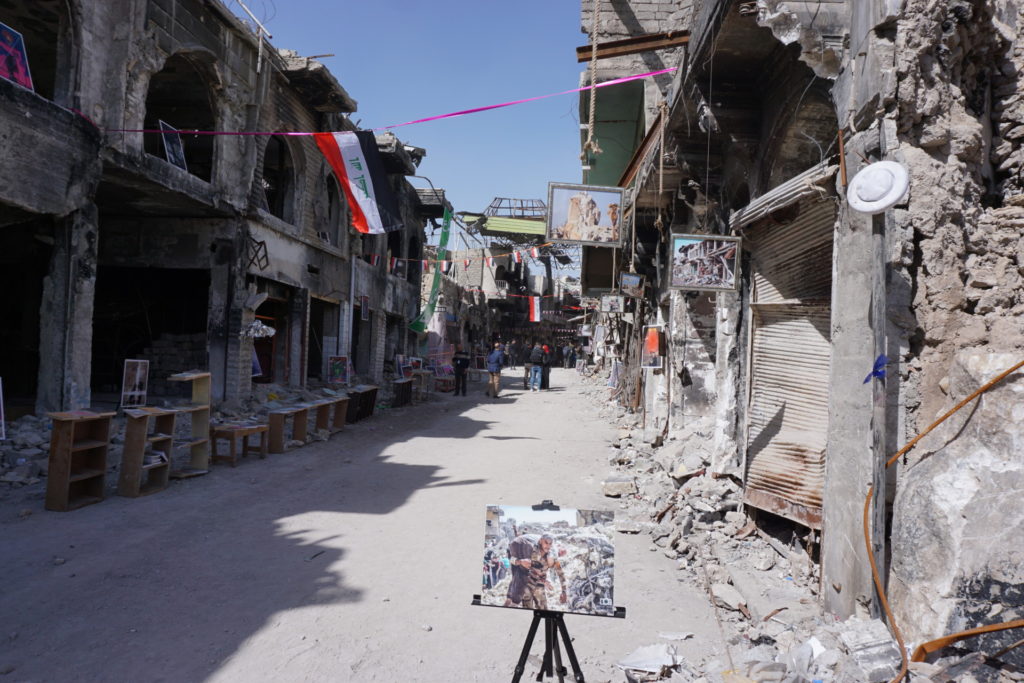
I continued past Najafi Street and walked to the women’s market in the Sarichkhana area, which is slowly but steadily reviving. I asked shop owner Abu Huthayfa about what life looks like in this retail hub, and he responded angrily: “It is not the place we know well. It is a different place. Sometimes, I open early in the morning, close down late, and sell nothing at all. The city center was once full of private clinics, government institutions and the public garage. None of them are available here nowadays. People used to flock to this street from all over Mosul; now it’s the other way around. If we need to see a doctor, we need to cross to eastern Mosul. People also prefer to shop from fancy shopping malls in that part of the city, not from here.”
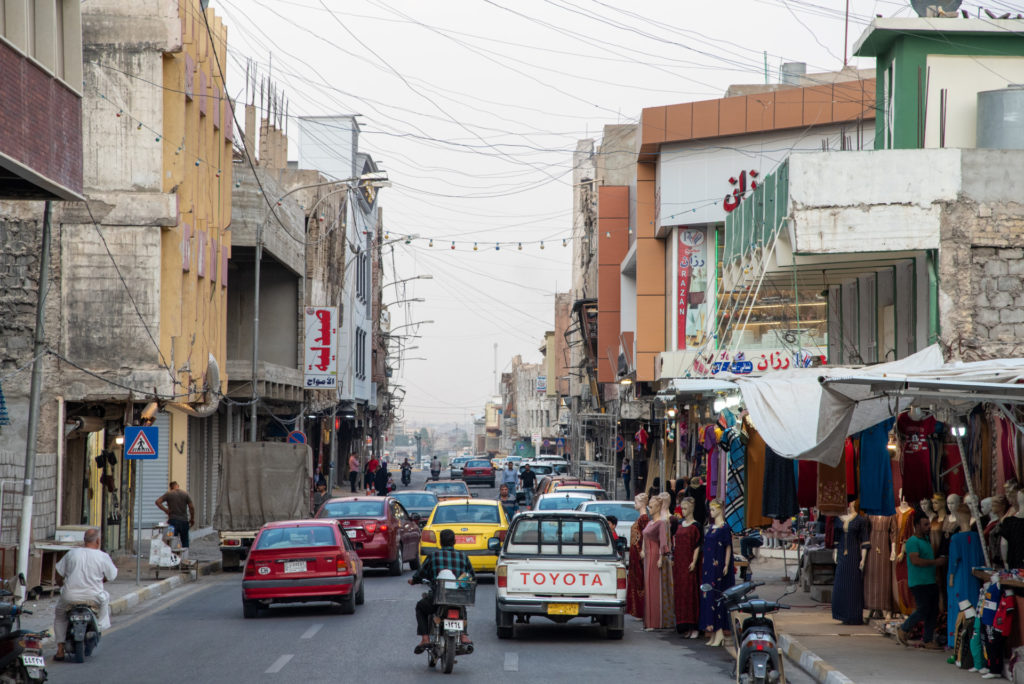
If there were a distinctive mark for post-ISIS Mosul, it would definitely be volunteerism. Thousands of youths participated in local volunteer teams, and NGOs started initiatives beyond expectations. Mosuli activists Bandar and Ayoob rolled up their sleeves in early 2018 and worked on reopening narrow alleys using small construction trucks called dumpers. That sparked volunteer efforts in what later became known as the “Dumper Truck Revolution.” They raised funds one dollar at a time to revitalize Mosul. Other teams gave foodstuffs, rehabilitated houses and reopened small livelihood projects.
In the years since, these local NGOs have gained more attention and trust from international partners like the GIZ (Germany), USAID and IOM. Mohammed Masood is one of the revolutionary youths who have been working since January 2017 to revive Mosul and the Old City in particular. I saw him working on a new USAID-funded project to revive small livelihoods like Khalooha Ajmal, or Make It Better, an NGO he formed. It was founded in January 2017, following the full liberation of eastern Mosul. It is easy to spot Khalooha Ajmal’s volunteers with their green shirts sporting the logo of a dove carrying an olive branch.
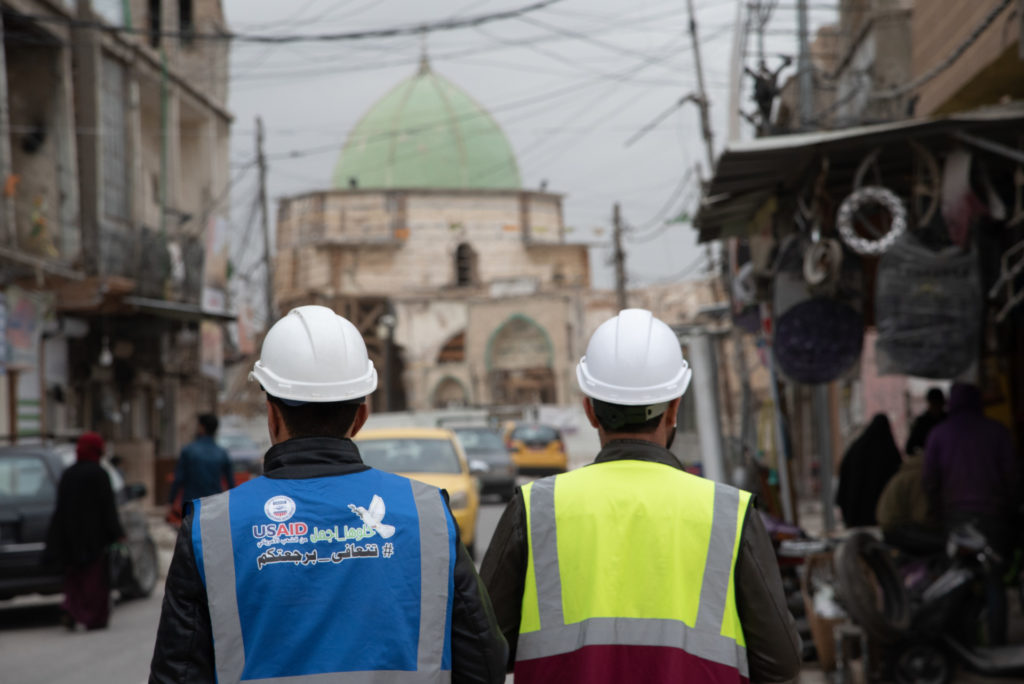
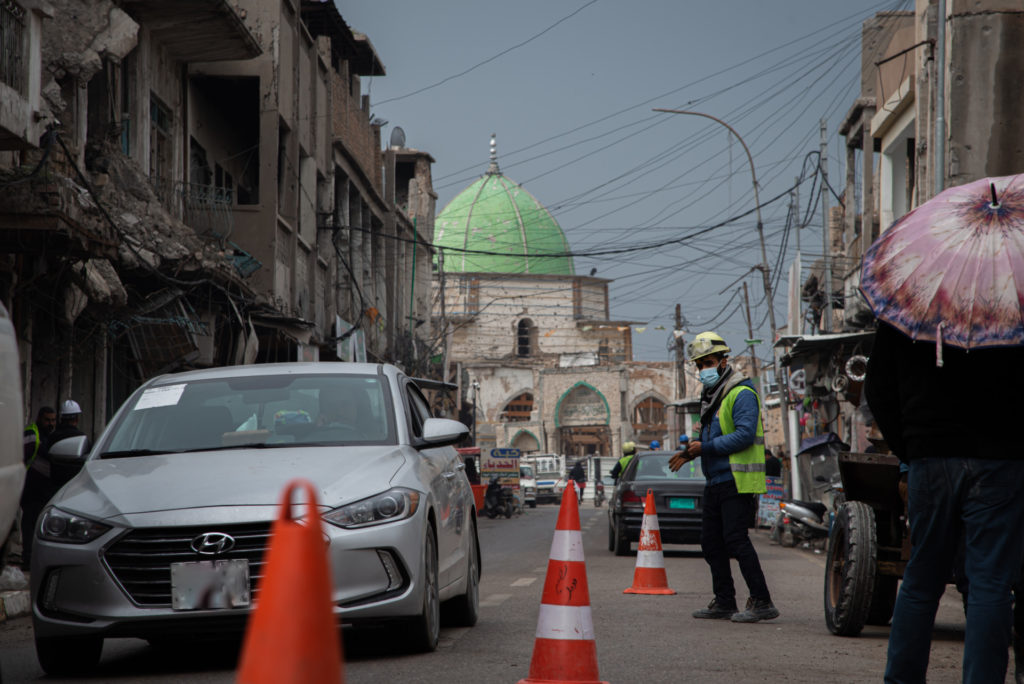
“We aim at reopening livelihood projects for people whose shops are damaged by war and receive no compensation from the government. It is ranging between $1,500 and $2,000 each,” Masood said. We walked together near the Nuri Mosque, and I counted at least 15 shops that have reopened in that place alone. “It’s the second project this year, and 70 shops will reopen soon. It’s helping many people to return to this place,” Masood continued.
On our way there, Abu Marah, a man in his 50s and a beneficiary of the program, invited us into his recently refurbished embroidery shop. Before ISIS, Abu Marah had two workshops, and he used to import raw materials from China. His brand has been well-known all over the Old City. “Everything is gone; I literally lost all I worked two decades for,” Abu Marah said, tears welling in his eyes. Then he turned to me and said firmly: “I worked in Erbil and then in eastern Mosul, but this place is different. It’s a sacred sanctuary to me. I talked to Khalooha Ajmal and they didn’t hesitate to respond to my request, and here I am open and happy again,” he said.
I left Abu Marah to walk with other friends to the newly opened downtown park. It is a new municipality project to revive some green areas and attract families to spend their leisure time together.
Where is Mosul heading? What will Mosul look like in five years? I don’t know. After the war, we expected something like a Marshall Plan to revive Mosul. But instead, we found ourselves dependent on the international community and IMF loans to restore our war-torn city. As things stand today, and with the Iraqi government’s ongoing problems, the increase in COVID-19 infections and the rapid decline in the value of the Iraqi currency, uncertainty abounds. What I do know is that, for now, I am witnessing the best time of my life as people around me make a difference in the day-to-day bustle of our beloved city.

Government supported entertainment facilities, like down town park, are attracting more people to come back and rebuild their shops. This park made a huge difference in the area. July 2021

Government supported entertainment facilities, like down town park, are attracting more people to come back and rebuild their shops. This park made a huge difference in the area. July 2021

All photos taken by Ali Al-Baroodi


